
The MIT Media Lab is a research laboratory at the Massachusetts Institute of Technology, growing out of MIT's Architecture Machine Group in the School of Architecture. Its research does not restrict to fixed academic disciplines, but draws from technology, media, science, art, and design. As of 2014, Media lab's research groups include neurobiology, biologically inspired fabrication, socially engaging robots, emotive computing, bionics, and hyperinstruments.

Graduate School of Architecture, Planning and Preservation (GSAPP) is the architecture school of Columbia University, a private research university in New York City. It is regarded as an important and prestigious architecture school. It is also home to the Masters of Science program in Advanced Architectural Design, Historic Preservation, Real Estate Development, Urban Design, and Urban Planning.
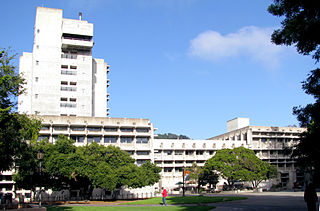
The College of Environmental Design, also known as the Berkeley CED, or simply CED, is one of fifteen schools and colleges at the University of California, Berkeley. The school is located in Bauer Wurster Hall on the southeast corner of the main UC Berkeley campus. It is composed of three departments: the Department of Architecture, the Department of City and Regional Planning, and the Department of Landscape Architecture and Environmental Planning.
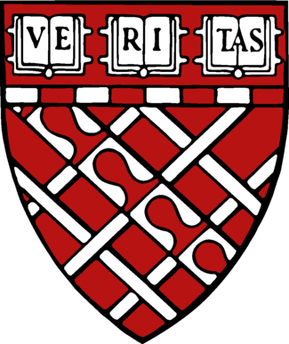
The Harvard Graduate School of Design (GSD) is the graduate school of design at Harvard University, a private research university in Cambridge, Massachusetts. It offers master's and doctoral programs in architecture, landscape architecture, urban planning, urban design, real estate, design engineering, and design studies.
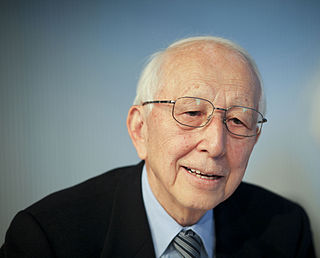
Fumihiko Maki is a Japanese architect who teaches at Keio University SFC. In 1993, he received the Pritzker Prize for his work, which often explores pioneering uses of new materials and fuses the cultures of east and west.

The A. Alfred Taubman College of Architecture and Urban Planning, also known as Taubman College, is the school of urban planning and one of the nineteen schools of the University of Michigan located in Ann Arbor, Michigan.

CEPT University, formerly the Centre for Environmental Planning and Technology, is an academic institution located near University Area in Ahmedabad, India offering undergraduate, postgraduate and doctoral programmes in areas of natural and developed environment of human society and related disciplines.

Denise Scott Brown is an American architect, planner, writer, educator, and principal of the firm Venturi, Scott Brown and Associates in Philadelphia. Scott Brown and her husband and partner, Robert Venturi (1925–2018), are regarded as among the most influential architects of the twentieth century, both through their architecture and planning, and theoretical writing and teaching.
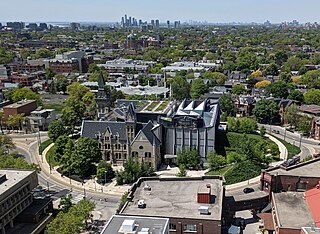
The John H. Daniels Faculty of Architecture, Landscape, and Design is an academic division at the University of Toronto which focuses on architecture, urban design and art. The Faculty was the first school in Canada to offer an architecture program, and it was one of the first in Canada to offer a landscape architecture program. As of July 2021, its dean is Juan Du.

Thomas Vonier is an architect with a private practice based in Paris and Washington D.C. He is a senior partner in Chesapeake Strategies Ltd, advising organizations on innovations in the building, design, security, and urban sectors.

The University of Texas at Austin School of Architecture (UTSOA) is a college within The University of Texas at Austin, with its major facilities located on the main university campus in Austin, Texas, United States.

Founded in 1854, the Department of Architecture (D-ARCH) at ETH Zurich in Switzerland is an architecture school in Zürich, providing education in the fields of architecture, landscape architecture, urban planning, and urban design. It has around 1,900 students, 350 staff members, and an annual budget of CHF 40 million.
The Cal Poly Pomona College of Environmental Design is a college part of the California State Polytechnic University, Pomona. The college houses over 1,600 students; making it one of largest environmental design programs in the United States. The college offers bachelor's degrees in five departments, as well as three master's degree programs. It is the only academic unit within the California State University system to be associated with a Pritzker Prize laureate.
The USC School of Architecture is the architecture school at the University of Southern California. Located in Los Angeles, California, it is one of the university's twenty-two professional schools, offering both undergraduate and graduate degrees in the fields of architecture, building science, landscape architecture and heritage conservation.

William John Mitchell was an Australian-born author, educator, architect and urban designer, best known for leading the integration of architectural and related design arts practice with computing and other technologies.
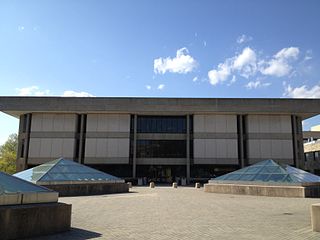
The College of Architecture, Arts, and Design formerly the College of Architecture and Urban Studies at Virginia Tech consists of four schools, including the School of Architecture, which consistently ranks among the best in the country. Headquartered in Blacksburg, Virginia, the college also has sites in Alexandria, Virginia, and Riva San Vitale, Switzerland. Spread out among these three locations, the college consists of nearly 2,200 students, making it one of the largest schools of architecture in the nation.
Alberto Alfonso AIA is a founding principal and president of Alfonso Architects, an architecture firm located in Ybor City, Florida, United States.
University of Minnesota College of Design is located on both the Saint Paul and Minneapolis campuses of the University of Minnesota-Twin Cities. The College of Design includes the full range of design disciplines and is home to eight undergraduate majors in the fields of architecture, apparel design, graphic design, interior design, landscape architecture, product design, and retail merchandising. There are 23 graduate degree programs, eight undergraduate minors, nine research centers, and the Goldstein Museum of Design.

Adèle Naudé Santos is a South African-born American architect and urban designer focused on low-income housing, campus architecture, and socially conscious design. She is the principal architect of Santos Prescott and Associates, based in San Francisco and Somerville, Massachusetts. She served as the Dean of the School of Architecture and Planning at Massachusetts Institute of Technology from 2003 to 2014. She became a Fellow of the American Institute of Architects in 1996.
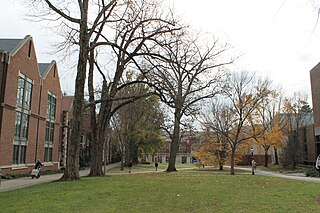
Princeton University School of Architecture is the name of the school of architecture at Princeton University. Founded in 1919, the School is a center for teaching and research in architectural design, history, and theory. The School offers an undergraduate concentration and advanced degrees at the master's and doctoral levels.

















